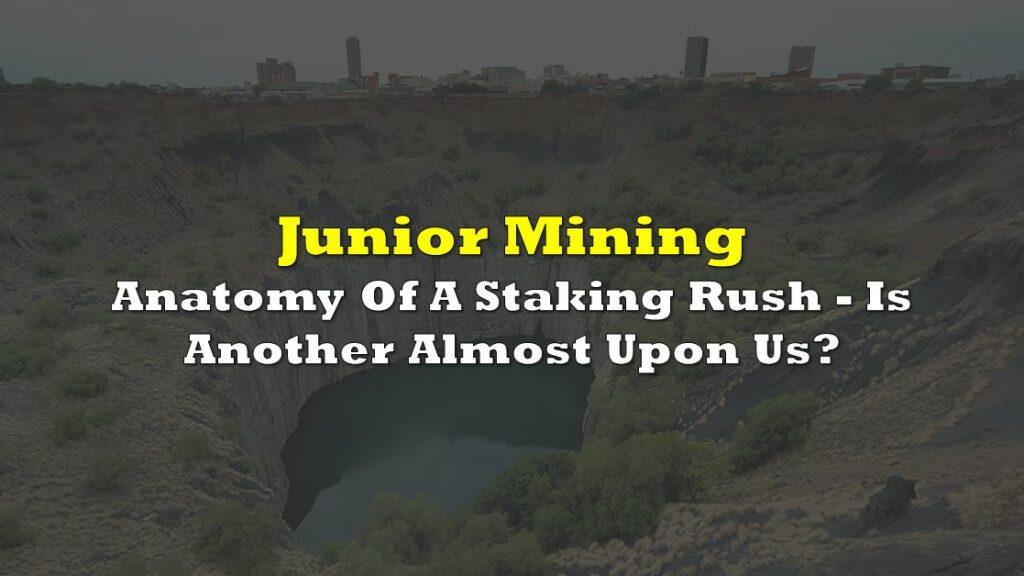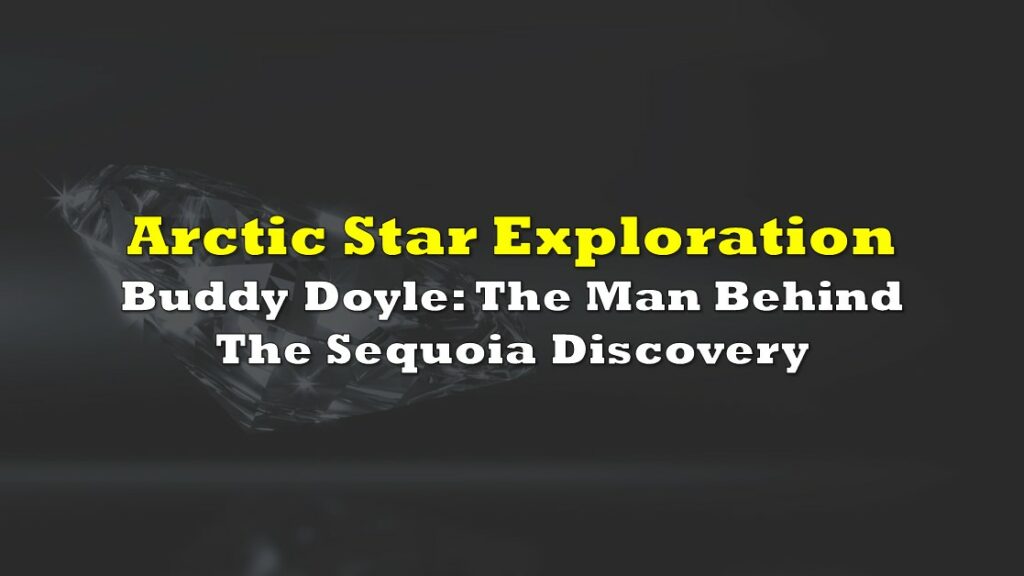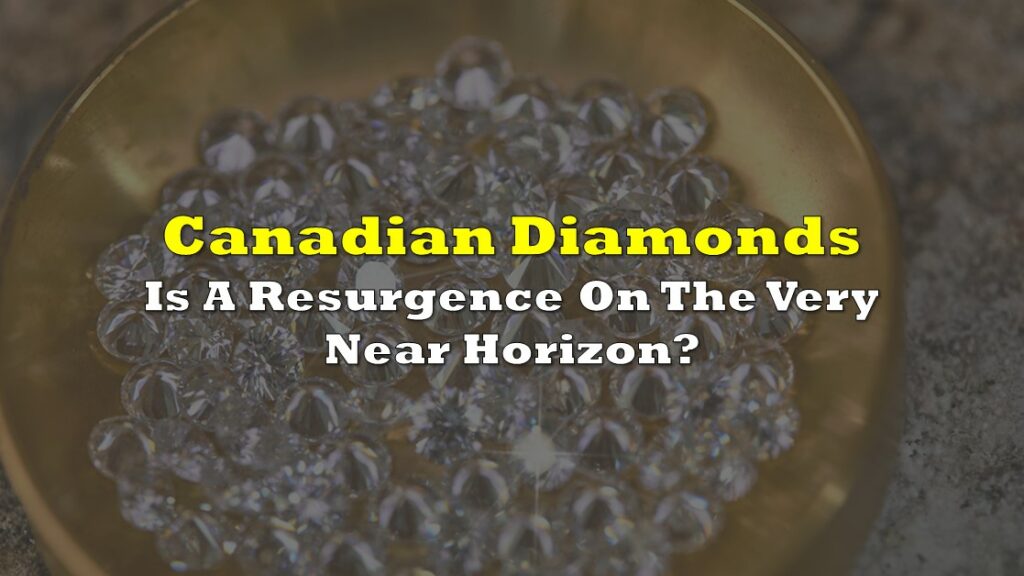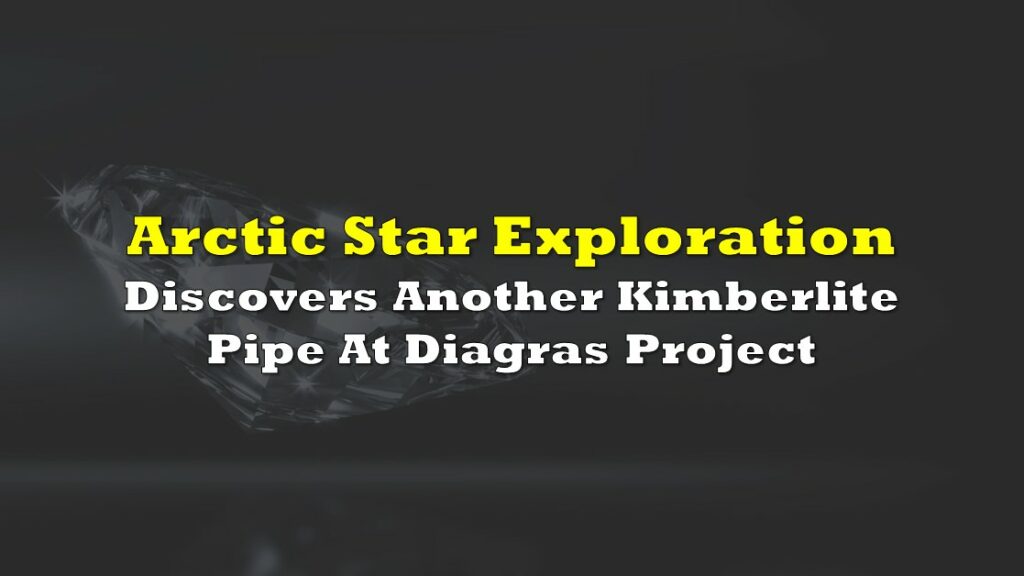The Canadian diamond mining industry has grown significantly in the 30 years since the discovery of diamonds near Lac de Gras in the Northwest Territories. Canada is now the world’s third largest rough diamond producer, accounting for 13.5% of 2019 worldwide production by volume and 12.5% by value, with diamond exports valued at $2.19 billion. The global diamond industry, which saw a large drop in production and prices during the Covid-19 -induced global economic slowdown, is now making a strong resurgence as consumer and industrial demand is rapidly rebounding.
The Diavik and Ekati Mines Are Depleting and Under Pressure
The prolific Diavik and Ekati mines account for the vast majority of Canadian diamond production. They have both matured and have now transitioned from largely depleted open pits to underground mining. Rio Tinto, the operator of the Diavik Mine, is planning to close the mine in 2025.
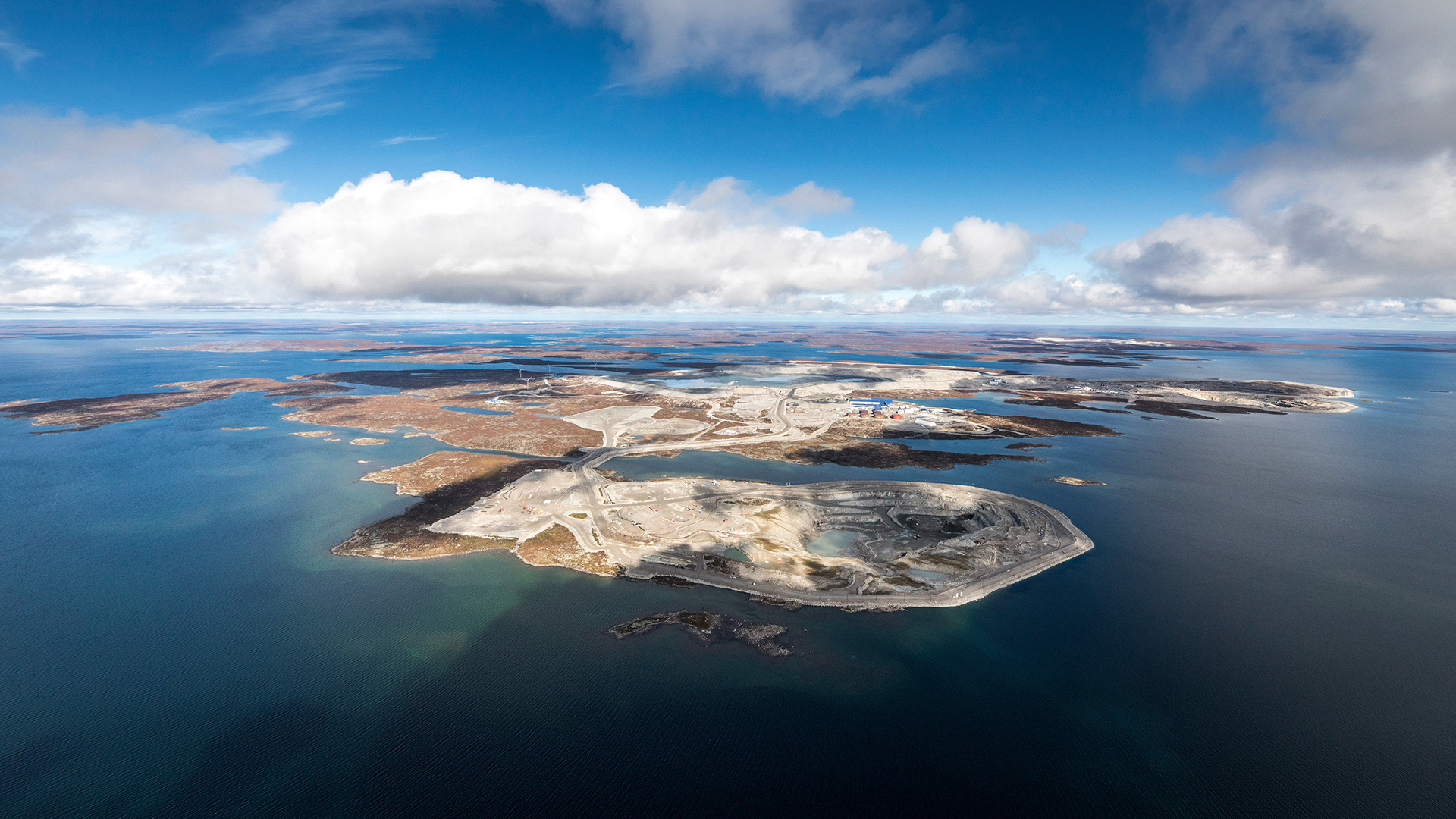
Arctic Canadian Diamond Company owns a controlling interest in the Ekati Mine and is the operator. Ekati is planning to open a new open pit to keep the mine operating until 2028 and is working on a major underwater project in an effort to extend operations. Ekati also continues to explore its properties in search of new kimberlites.

An Industry That Needs a Winner
These mine closures could have a dire impact on the NWT economy in terms of job losses and social disruptions, as the region’s economic growth over the past 30 years was largely driven in support of the diamond industry. The royalties from the mines help improve living conditions in the northern first nations communities and have enabled improvements to the region’s infrastructure.
As foreboding as the situation appears, there may be a light at the end of the tunnel. A certain Canadian junior exploration company may have made a potentially significant discovery – one that could inject renewed hope into the region.
Could Arctic Star Be That Winner?
In 2021, Arctic Star Exploration Corp. (TSXV: ADD) discovered what could potentially be the largest diamond-bearing formation in the Lac de Gras district, one that eclipses the original find in the 1990’s that hosts the Ekati and Divik mines. Called the Sequoia Kimberlite Complex, it sits on Arctic Star’s 48,346 hectare Diagras Property. It is located in the northeastern part of the Lac de Gras kimberlite field, approximately 300 kms northeast of the city of Yellowknife and in close proximity to the Ekati and Diavik mines.
What They Found
Relying on surface geophysical mapping, a small ground sampling program found two commercial-grade diamonds, with ensuing diamond chemistry analysis indicating the potential for large diamonds greater than 52 carats. The size frequency curve at Sequoia has a shallow gradient that suggests a coarse diamond population. Upcoming results will be added to the size frequency curve to get a more concise picture of the deposit.
What makes the Sequoia discovery special is that the caustic fusion results from the samples showed one-half of the diamonds are Type-2 diamonds, which are nitrogen-free, almost pure carbon, and highly sought after in the diamond market.
Typically, the diamonds found around Lac de Gras have mostly been non-transparent grey stones, known as Boart. Caustic fusion from the Sequoia samples shows a highly unusual 100% white and clear population. Only around 2% of diamonds found around the world are Type-2, although new recovery techniques such as attaching radar to the crushing equipment can identify good quality stones that in the past would have been degraded during the crushing process.
Diamond Industry Legend Chuck Fipke’s Confirmation
Buddy Doyle, Arctic Star’s Chief Geologist, shared the caustic fusion results with Chuck Fipke, the diamond exploration expert geologist who made the initial Ekati diamond discovery. Mr.Fipke confirmed an abundance of clinopyroxene and garnets, diamond indicator minerals that are formed at great depths and found within the unique chemistry associated with large, greater-than 50 carat, clear gems. These are excellent predictors of the presence of gem-quality diamonds.

Arctic Star’s Drilling
The company’s Spring 2022 drill season recently concluded. The most recent drill core taken was sent to the SRC (Saskatchewan Research Council) diamond laboratory for caustic fusion analysis, and this will give Arctic Star a clearer picture of Sequoia’s potential. Due to a lake on the property, the company will not be able to conduct more drilling on Sequoia until the ice forms again later this year. In the interim, the company will compile data, determine the exact dimensions of the kimberlites, and assess tonnage to determine grades and grade variation.
When drilling resumes after the lake ice has formed, ADD will conduct a large 3000 ton bulk sample by drilling cores of up to one-metre in diameter. This will help determine the diamond population and the average price per carat.
A Pre-Feasibility Study?
Diamonds from half of the sample will be sent to four or five diamond buyers to determine the average pricing of $/ton and $/carat. The other half would be used for the company’s NI 43-101 Report. Grades will vary, but Arctic Star will get a better sense of their value as they develop an economic model for the Diagras Project and work quickly towards creating a Pre-Feasibility Study (PFS).
A Possible Producer?
When looking at the Ekati and Diavik operations nearby, production costs for diamonds in the region are known to be in the range of $70 to $110 per tonne, at least based on how these two mines are ran. The company as a result has a sort of baseline for knowing where its value per tonne needs to sit in order for production to be feasible.
The company itself within its investor presentation walks through a situation in which it highlights at what point the potential for a mine at Sequoia exists, based on the nearby production costs that set a sort of baseline for the region.
In the example, the company assumes a grade of 0.5ct/tonne in the kimberlite. At $70/tonne production costs, it means the kimberlite needs to have diamonds valued at more than $140 per carat. The Lac de Gras Field meanwhile has diamonds that on average are worth between $21/carat through to $420 per carat, depending on the kimberlites.

Three Potential What-if Scenarios for Arctic Star
- Could Sequoia be bigger than Ekati or Diavik?
If the current assessments about the potential of Sequoia’s populations of Type-2 diamonds and the size of its kimberlite fields come to fruition, it could enable Arctic Star to become a major industry supplier of valuable, high-demand, nitrogen-free, clear Gem-quality diamonds. This would also serve to enhance Canada’s already stellar reputation in the global diamond industry.
- Could Arctic Star acquire a nearby mill?
If production at Sequoia proves to be economically feasible, it might benefit both Arctic Star and Ekati or Diavik if Arctic Star were to acquire the one of the producers mills, greatly reducing mine closing costs. Otherwise, the reclamation and remediation costs to the their properties could potentially be astronomical. Arctic Star would need a mill in any case, and since either mill is only a short distance away, it would negate the need for ADD to build its own mill. Such an arrangement would also be beneficial to the surrounding communities and promote goodwill.

- Could ADD be a potential acquisition by a neighbouring major?
If Sequoia were deemed to be economically feasible to mine, it could entice Ekati or Rio Tinto to acquire or joint-venture the Sequoia property to extend their own operations in the region. It makes sense, as they already have their infrastructure in place.
Exploration companies typically develop their projects to the point of pre-feasibility, and are then acquired by producers, who have the expertise and resources to take the projects to the next level. Such an exit would likely provide a windfall for Arctic Star shareholders.
Results Expected in Days
Shareholders can expect the results of the latest drilling program to start being released in the coming weeks. In the last news release on June 22, Arctic Star commented:
“Kimberlite samples from the Arbutus kimberlite and Sequoia kimberlite have arrived at the SRC (Saskatchewan Research Council) diamond laboratory in Saskatoon and processing has commenced. The first set of diamond results are expected mid-July.”
Arctic Star Going Forward
Yes, a completed pre feasibility study could accelerate Arctic Star’s path to a lucrative exit, but it is still early days for the company. Much work is still needed in order to determine the size and scope of the Sequoia Kimberlite Complex – but the prospects do appear promising. The company also appears to be well funded, having recently announced that a $1 million private placement financing (at $0.07 per Unit) is fully subscribed, and expected to close any day now – and last traded at $0.095 cents per share. This, of course, is on top of a recent raise for $3.4 million, for which excess demand led to the second financing.
FULL DISCLOSURE: Arctic Star Exploration is a client of Canacom Group, the parent company of The Deep Dive. The author has been compensated to cover Arctic Star Exploration on The Deep Dive, with The Deep Dive having full editorial control. Not a recommendation to buy or sell. Always do additional research and consult a professional before purchasing a security.





